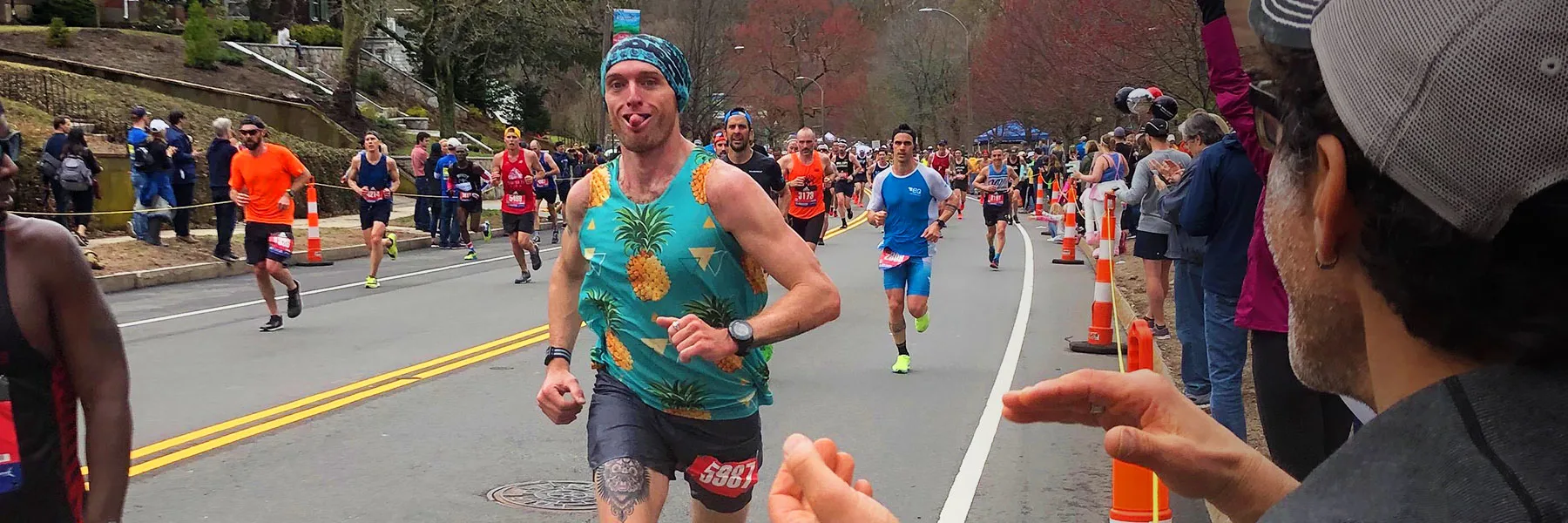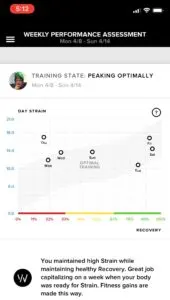Topics
- Article
- Running
A Marathoner's Guide to Staying In the Green

The week before a big race. In the endurance community, it’s when you’ll hear things like, “The hay is in the barn,” and “The hard work is already done.” But really, I’d argue that the work you do to prepare your mind and body in the two weeks leading up to a race is worth just as much as the physical efforts you’ve completed in the months beforehand.
If you line up at the start line as a ball of nerves you’ll be mentally ill-prepared to utilize your body at its physical peak. It takes just as much, if not more, focus and discipline to nail the taper before a race–especially when you have more free time on your hands with less training volume.
Training Based on Recovery
After getting a WHOOP, I started noticing a few patterns in my HRV and sleep. In the weeks leading up to the 2019 Boston Marathon, I decided to put my habits under a microscope and hopefully figure out how to arrive at the start line feeling my best mentally and physically. So I started to track everything that I thought affected my sleep and overall feeling each morning.
As a result, I woke up Marathon Monday with an HRV three times my baseline average–it was the highest HRV I had ever seen for myself! I felt more ready for any race I’ve ever trained for and I felt ready to fight hard and to do my best.

Here’s a little background before we dive into some details: The training block leading up to Marathon Monday was as good as it could get. I averaged about fifty miles per week with speedwork, lifting, cycling, and yoga all mixed in around the runs. I ran my fastest half-marathon a month before the race and committed the next four weeks to eating extremely clean and giving up drinking (the first thing anyone will notice with a WHOOP is how a single night of drinking impacts sleep and recovery).
My marathon training was also completely injury free. I was able to avoid overuse injuries like the dreaded plantar fasciitis, or IT band syndrome. Diet, sleep, and proper recovery play a huge factor in keeping yourself healthy and your muscles pliable. When I would notice a dip in recovery scores, I’d rearrange my easy workouts and my intense workouts to let my body catch back up with the strain I was putting it through.
Some weeks I completely ditched the track workout because my HRV was consistently low. Coming from someone who has never gone through a whole winter training regime without an injury in the past, this was a pretty remarkable feat.
WHOOP feedback on sleep habits helped with some more details on what led to better sleeping and HRV. I don’t quite have a schedule that allows me to commit to a regular daily bedtime/waking time, but I did my best to stay as consistent as possible. I also cut coffee out almost entirely; some mornings I’d have a few sips, but I noticed that eliminating caffeine helped get me to sleep a lot faster.

The top four things that seemed to affect my sleep are probably no big secret, but having experienced them first hand made me think, “Why on earth don’t I do this all the time?”
1. Reading (real books) before bed. The nights I read, even a page or two, increased my REM and SWS time, and sleep efficiency (see above).2. CBD oil: I took about 40mg of CBD before bed.3. Herbal tea before bed.4. Fasting: I went to bed a little bit hungry having not eaten for about 2-3hrs.
The nights I was able to do these four things before going to sleep led to mornings with an HRV of 100+ and a feeling like I could spring out of bed and conquer the world. Take a look at my weekly performance assessment the morning of the marathon:

Tapering Based on Data
Additionally, I was able to be a bit more dynamic with my taper workouts by using feedback from WHOOP. I have a couple of key workouts that I like to do before a big race. One involves weight lifting and the other is a speed workout on a track. I usually just scheduled these randomly during the taper week and hope I time them correctly. When I woke up with a recovery score that was less than optimal on Thursday, instead of just muscling through it and risking injury or poor form on race day, I was able to shift my schedule to a more optimal training window the next day, allowing my body plenty of time to recover for the 26.2 miles ahead.
Two of the biggest contributors to poor sleep and HRV probably don’t come as a surprise to anyone. Going to bed checking my phone or watching TV made my recovery scores plummet, and falling asleep with a full stomach affected things even worse than phone use. Again, you might know this intuitively, but analyzing the data from WHOOP made me realize just how detrimental these behaviors were to sleep quality and recovery.
The feeling of lining up for the big A-race is amazing, but lining up for that race knowing you are confident and ready to go is surreal. If you can’t record things, you can’t improve on them. WHOOP gave me a way to track what works best for me and insight into how to do it even better next time.
Check out Billy’s complete recap of the marathon here.
Learn More: Running Heart Rate Zones